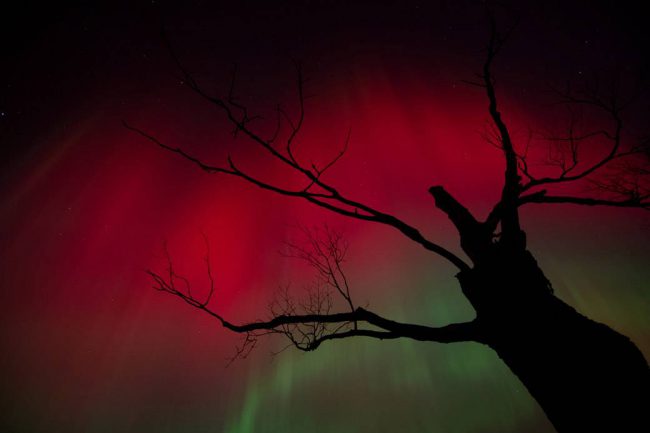Watch the video above: The sun unleashes a powerful solar flare.

TORONTO – Chances are good that – if it’s clear Thursday and Friday night – auroras may light up the sky over Canada.
(The only places that may see completely clear skies, however, are southern Saskatchewan and British Columbia. You may have to battle some clouds elsewhere in Canada to catch them.)
As Canadians we’re fortunate enough to be in northerly latitudes that favour northern light viewing.
So why are we so lucky?
The sun is cooperating
On Tuesday the sun released a moderate solar flare as well as a coronal mass ejection. But on Wednesday the sun released a powerful X-class flare – the strongest on a scale that measures these magnetic eruptions.
READ MORE: Chance of northern lights as sun blasts powerful Earth-directed flare
The particles ejected from the sun set to reach Earth sometime tonight. But if it hits on Friday – and there’s still a chance that may happen, as well – we may have a second chance to see the northern lights, formally called the aurora borealis.
What’s going on?
These dancing displays of light are an interaction between Earth and the Sun.

“It doesn’t have to hit during your night,” said Dean Pesnell of the Solar Dynamics Observatory. “It can hit during your day, and then you’ll still have aurora that evening.”
Solar flares originate from sunspots. These much cooler parts of the sun have complex magnetic fields that create an eruption. Often these solar flares result in a coronal mass ejection, a another type of eruption of particles occurring in the sun’s outer atmosphere, called the corona.

Think of the sun’s magnetic field like a looped rubber band. One end is at the south pole; another at the north. As the sun rotates, the magnetic loops wrap tighter and tighter, making them twist. Suddenly the stored energy releases in the sunspot area and – bam! – you have a solar flare.
But you need a coronal mass ejection – that often happen as a result of a solar flare – to get northern lights.
- Invasive strep: ‘Don’t wait’ to seek care, N.S. woman warns on long road to recovery
- Ontario First Nation declares state of emergency amid skyrocketing benzene levels
- T. Rex an intelligent tool-user and culture-builder? Not so fast, says new U of A research
- Nearly 200 fossil fuel, chemical lobbyists to join plastic treaty talks in Ottawa
The visualization above shows the particles streaming towards Earth, disrupting the planet’s magnetic field lines. The field lines then snap back, allowing particles to stream into the polar regions and creating the dazzling northern lights. (It’s also interesting to note that Earth isn’t the only planet that gets aurora: They’ve been observed on other planets in the solar system, such as Jupiter and Saturn.)
The northern lights are actually visible in the far north – the Arctic – almost every night of the year due to particles that are constantly flowing from the sun. But when a coronal mass ejection is hurled into space it produces many more particles than normal, setting Earth’s magnetosphere on fire (so to speak) and allowing the northern lights to be seen farther south.
If you plan to head out Thursday or Friday night, remember your odds of seeing the northern lights increases the later it gets. And we’re talking after midnight, mostly. That’s because of the way the auroral oval (like an irregularly shaped doughnut) tends to form over the north pole. It favours Canada in the wee hours of the morning.
So hope for clear skies over the next couple of days, so you can see Earth’s greatest light show.



Comments